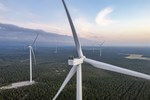News Release from WindEurope
Wind Industry Profile of
Europe must get its State aid rules right to have any chance of delivering climate neutrality
EU State aid rules are key to creating the conditions for a cost-effective transition to a climate-neutral economy. The revision of the 2014 guidelines is meant to help the delivery of the European Green Deal by enabling National Government to achieve the now increased 2030 Climate and Energy targets. The European Climate Law Impact Assessment shows that renewables will deliver the bulk of EU’s decarbonisation effort (with wind providing more than 50% of the EU’s electricity in 2050). Delivering this requires doubling the rate of wind deployment from today’s 15 GW p.a. to 30 GW p.a.
Yet, the first draft of the post-2021 rules fails to clearly prioritise the cost-effective deployment of renewables, a pre-condition to delivering climate neutrality. In a change from previous rules, the new draft guidelines integrate renewables within a broad “Decarbonisation” heading where public support is allocated to those technologies abating the most CO2 in technology-neutral auctions. While the guidelines allow for exemptions, giving National Government to option to run technology-specific auctions, these exemptions come with cumbersome conditions.
The draft is also inconsistent with existing EU Market Design and Renewable Energy legislation when it comes to auction design and market premium allocation.
The European wind industry makes the following recommendations to ensure the guidelines enable the accelerated deployment of renewables:
First, National Governments must be able to hold technology-specific auctions without excessive and cumbersome justification. Technology-specific auctions give investors visibility on market growth which is critical to the development of the supply chain. They give needed visibility for grid build. And crucially, they allow National Governments to manage the transition towards a climate-neutral energy system that maximizes the value of each renewable energy technology.
Second, National Governments must be able to design good revenue stabilisation mechanisms such as two-sided Contracts for Difference (CfDs). Revenue stabilization mechanisms help bring down the cost of financing renewable energy projects, driving cost-effective deployment and ultimately delivering cheap electricity for consumers.
Third, National Government must be able to allocate direct support for pilot and demonstration projects outside of auctions. These projects are critical to de-risking technology development. Demonstration projects allow European companies to maintain their edge in technology development over the global competition.
Read the full response of the European wind industry to the revision of the EU State aid rules
- Source:
- WindEurope
- Author:
- Press Office
- Link:
- windeurope.org/...
- Keywords:
- WindEurope, EU, European Commission, State aig guidelines, environment, energy, government, European Green Deal, electricity, market, CO2, emissions





















